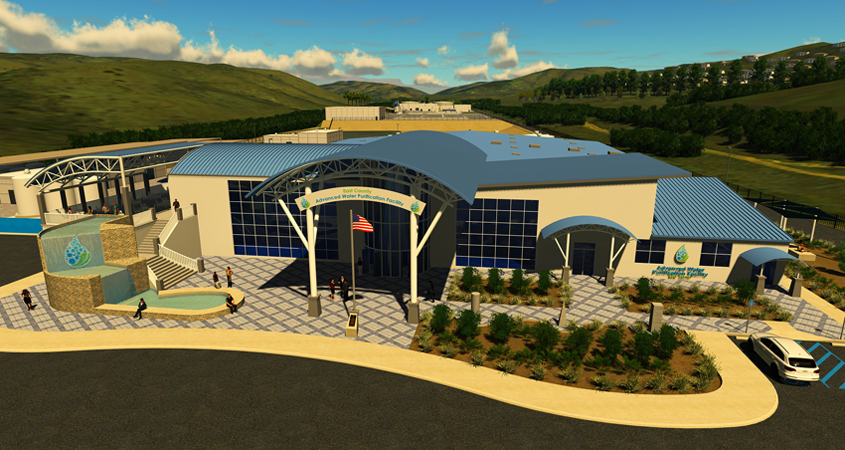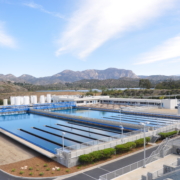A water recycling project that will purify treated wastewater into drinking water for East San Diego County is moving toward its completion date after the Helix Water District Board of Directors authorized the signing of water purchase agreements.
The East County Advanced Water Purification Project is a collaborative, regional effort to diversify the district’s water portfolio and provide a drought-proof supply. The water reuse project will further enhance reliability by purifying treated wastewater using Lake Jennings and other facilities.
The Helix Water District Board of Directors authorized its General Manager to sign water purchase agreements for the East County Advanced Water Purification Project at a special meeting on May 27.
Water recycling project ‘investment in water supply reliability’
The $681 million project, led by the East County AWP Joint Powers Authority, will recycle daily wastewater flows from Santee, El Cajon, Lakeside, Winter Gardens and Alpine. Treated water will undergo membrane filtration, reverse osmosis and advanced oxidation to produce water that is near-distilled in quality.
The purified water will be piped into Helix’s Lake Jennings before undergoing additional processing at the district’s R.M. Levy Water Treatment Plant and then distributed as safe, clean drinking water.
“I’m looking forward to the development of this project and I believe it’s an investment that strengthens our district’s water supply reliability and security,” said Helix Water District Board President Mark Gracyk. “This is a great example of what can be accomplished by working with our neighboring agencies.”
Water reuse will reduce dependence on imported water
East County AWP project water will reduce east San Diego County’s dependence on imported water by almost 30% once full operations begin in 2026. The project will create a local supply for the East County at about the same cost as what Helix pays now for imported water, according to the Helix Water District.
San Diego County water agencies, including Helix, Padre Dam, and the cities of San Diego and Oceanside, are developing or expanding water recycling projects. Diversifying local supply sources remains a priority for the San Diego County Water Authority. Imported sources, including water from the Colorado River and State Water Project, can be cutback during times of drought.
“The project was conceived by JPA members as a way to reduce rising wastewater costs for their customers,” said Helix Water District General Manager Carlos Lugo. “For Helix to participate, the project had to make financial sense for our ratepayers as well. By expanding our local supply, the East County AWP project water will help ensure that we are better able to navigate future droughts.”
The 30-year purchase agreements establish the cost and quantity of water that Helix will purchase from the East County AWP JPA under the proposed project.
Agency collaboration on sustainability

An artist’s rendering of the new East County Advanced Water Purification Facility. The water recycling project is a partnership between Padre Dam MWD, Helix Water District, San Diego County and the City of El Cajon Graphic: Courtesy Padre Dam Municipal Water District
Helix and the JPA members – Padre Dam Municipal Water District, San Diego County Sanitation District and the City of El Cajon – have been working together to evaluate the ECAWP plan since 2014. Each JPA member has until 2021 to make a final decision on the feasibility of the project and participation.
Helix has invested $850,000 and significant board and staff resources to study the feasibility of the project, including a tracer study with Scripps Institution of Oceanography to learn how water moves and mixes in Lake Jennings.
“We are committed to exploring sustainable projects that benefit our customers,” said Gracyk. “The ECAWP project will be a great complement to our other ongoing investments in regional water supply projects, such as the Carlsbad Desalination Plant, to ensure we have enough water to meet demand.”





